Project
Technology primed as next modern growth driver
Published
10 months agoon
Obstacles in funding sci-tech projects could soon be resolved to release resources and create momentum for the country’s economic growth.
 |
| Ministries are working to draft rules for spending in technology, innovation, and the digital transition, Photo: Shutterstock |
At last week’s conference on science, technology, innovation, and human resources, Minister of Information and Communications Nguyen Manh Hung said that growth by traditional drivers had gradually reached its limit. Vietnam’s economy can grow up to 7 per cent by traditional drivers, but finding new drivers is essential for the higher growth rate, which can only come from these areas.
“Agriculture has helped Vietnam escape poverty. Foreign investment, and industrial development have enabled the country to become an upper middle-income country. To become a high-income country, we must rely on science and technology, innovation, and digital transformation. These three factors are the main drivers to develop modern productive forces, perfect production relations, innovate national governance methods, develop the socioeconomic landscape and become rich,” he said.
According to Hung, science and technology would contribute to the country’s economic growth if research outcomes could be commercialised. So these outcomes, funded by state budget, should be owned by research institutions.
“To stimulate the creativity, scientists and engineers should enjoy about 30-50 per cent of commercialised gains, while the state can benefit from taxes and jobs after research results commercialised and generating revenue and profit,” he said.
Hung proposed that the state accept risks in research, along with risk management solutions, such as budget allocation and management of research results by stage, classification, and risk levels. “We can change awareness and the way of doing very soon, right in the first half of this year, by amending the Law on Science and Technology and other relevant legislation,” he said.
Minister of Science and Technology Huynh Thanh Dat emphasised removing difficulties in sci-tech and innovation activities to submit in the draft decree to the National Assembly for approval at this month’s meeting, including piloting policies related to assets formed from research using the state budget, and policies for developing the market.
“The law is being revised to institutionalise the Party’s policies. Moreover, a decree including content on innovation and creative startups is being built to create a legal basis for the establishment and strong development of innovation centres and organisations, supporting innovation and creative startups in application, technology transfer, and innovation. These will be submitted to the government in the first quarter,” Dat said.
The Ministry of Information and Communications has proposed the appointment of contractors and shortening the process of digital transformation projects.
“The state should assign tasks and place orders to master strategic technologies and large digital transformation projects, increase the budget for hiring IT services, develop a cloud computing centre exclusively to support such a transformation at authorities, build a high-performance AI computing centre, and fund 30 per cent of the first semiconductor factory in Vietnam,” Hung said.
Minister of Finance Nguyen Van Thang proposed to amend the Law on Science and Technology and stipulate that the Ministry of Finance (MoF) allocates enough state budget for this.
“Based on the total assigned budget, the Ministry of Science and Technology (MoST) and related authorities at all levels develop a plan for budget allocation, management, use, and expense, ensuring compliance with the goals and orientations for this development,” Thang said. “We should strengthen decentralisation, autonomy and responsibility to research organisations in reviewing, approving and using the state budget for sci-tech and innovation.”
The MoF is working with the MoST in drafting a resolution of the National Assembly on pilot policies for related spending. The MoF is reviewing and proposing amendments to the Law on the State Budget that will collect comments and proposals of relevant ministries and agencies on financial mobilisation and the budget.
The MoF is submitting revised documents for the Law on Corporate Income Tax, and Personal Income Tax, including proposals for corporate income tax incentives for investment in small and medium-sized technical and service facilities, incubators, and personal income tax incentives for high-tech employees.
“We will build tax sandboxes, allowing testing of new, more flexible tax policies to support development, regularly reviewing, updating, and adjusting tax policies to suit the development of sci-tech and digital transformation,” Minister Thang said.
According to the MoF, the state budget allocation for 2021-2025 for innovation and the digital transition is allocated with integrated funding from different sources. However, spending in this area is still modest, at 1.39 per cent in 2023, 1.97 per cent in 2024, and expected to reach 2 per cent this year.
Moreover, the current state budget spending on sci-tech is noted in many laws, including the Law on Science and Technology, the Law on the State Budget, the Law on Public Investment. The regulations on spending are also inconsistent, causing difficulties in arranging and allocating capital sources, and settling projects.
| Marc Woo, CEO, Google Vietnam
I highly appreciate the ambitious science and technology goals of the Vietnamese government. For us, Vietnam is an important partner, and AI has been developing very well here. However, for rapid growth, we need a high-skilled workforce, talent, and businesses that are proficient in AI technology. Specifically, there are four promising lands for cooperation. The first space is AI models. Google has spent plenty of resources building large language models, which need to be trained by data sources, especially diverse and high-qualified Vietnamese people. To develop the workforce, we will continue to provide scholarships and AI skills training programmes for individuals. Students and teachers need AI-supported learning and teaching tools. We are willing to provide free access to Google Works, Google Space, and Google Classroom, which will support young people to use AI at an early age. We welcome and highlight that the government plays an important and pivotal role in supporting and development of AI applications. Based on Google’s practical experience working in many countries, we positively acknowledge that the government is building an open national dataset and allowing businesses to build useful and responsible AI applications based on this dataset. We can exchange and share experience with the Vietnamese government. If working together, we will achieve many good results for Vietnam, and enable it to enter a new era of national development. Suk Ji-won, general director Samsung R&D Centre Vietnam Samsung is interested in training science and technology talents in Vietnam. We have awarded 875 scholarships to talented IT students, provided programming courses for more than 25,000 students, and internships at the centre for about 2,400 Vietnamese students. Samsung has sponsored labs and provided more than 700 computers to universities to improve the IT training environment, and sponsored programming competitions for students. The Samsung Innovation Campus programme offers free courses on the Internet of Things, AI, big data, and coding and programming. Since 2019, more than 12,000 students have participated. We will do the utmost to train high-quality personnel by expanding and specialising cooperation initiatives with universities in talent training activities. I suggest the Vietnamese government builds a high-skilled and professional workforce in AI and semiconductors. The government should issue incentive policies to recruit foreign managers and experts for training and nurturing talents such as visa support policies or tax exemptions, as well as housing, healthcare, and education support policies for families of foreign experts. These will be essential conditions for them to participate in training talents for a long-term in Vietnam. I hope that these policies will also be applied to excellent workers selected by Vietnamese authorities and organisations, and also experts sent by enterprises to Vietnam to work on high-tech projects. In addition, the country also needs to improve the investment environment to encourage foreign-invested enterprises investing in high-tech industries such as AI and semiconductors. I believe that if the government continues to improve the investment environment by simplifying licensing procedures and providing preferential policies for foreign-invested enterprises in high-tech projects, the country will become a hub for the high-tech industry. Vu Manh Cuong, director, Nvidia Vietnam Vietnam will need hundreds of thousands of AI engineers within the next three years as it is facing a shortage of personnel at all levels and in various fields such as data science and AI operations. When AI is applied to specialised fields like biology, medicine, banking, and telecommunications, Vietnam will need even more scientists and engineers mastering AI technologies. Nvidia launched the Deep Learning Institute, offering free curricula, tools, and cloud-based graphic processing resources for universities to train students in six components, including machine learning, data science, and large language models. We are working with many local universities and businesses, such as Hanoi University of Science and Technology, Vietnam National University, Danang University, Duy Tan University, Posts and Telecommunications Institute of Technology, and FPT University to train students. Nvidia can train a large number of personnel and the programme covers three areas: upscaling and reskilling IT workers in public agencies, businesses, and startups; training students; and providing high-quality training for top talents. However, the government should support more new schemes, in addition to orders from large companies like Viettel and FPT, for AI training and support for instructors. Funding is necessary to train large numbers of people. |
You may like
-
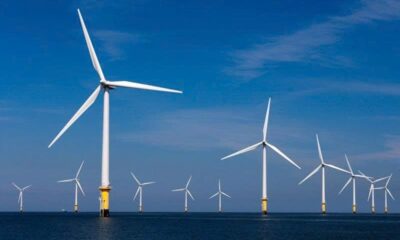

Vietnam’s Exclusive Economic Zone boasts over 1,000 GW of wind power potential: report
-
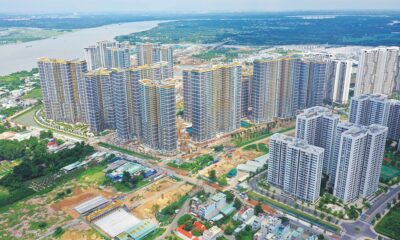

Uncertainty weighing on real estate
-
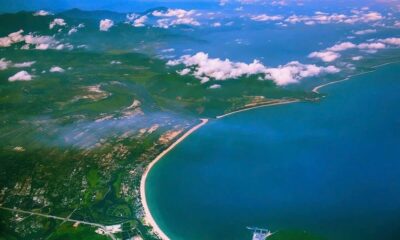

Central Vietnam city seeks $1.84 bln for 15 projects in economic zone
-
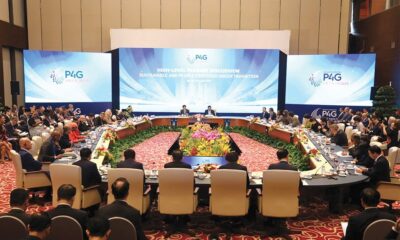

Green engagement rides high in Vietnam
-
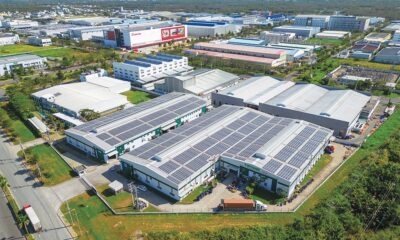

New standards being reached within green industrial parks
-
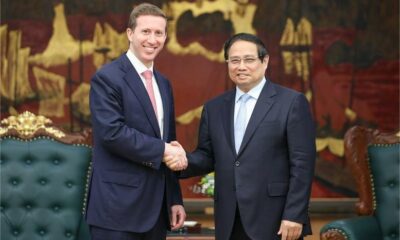

Vietnam PM asks Warburg Pincus to invest ‘further and faster’
Project
Vietnam’s Exclusive Economic Zone boasts over 1,000 GW of wind power potential: report
Published
8 months agoon
April 27, 2025Vietnam’s Exclusive Economic Zone (EEZ) has a wind power potential of 1,068 GW, nearly 470 GW more than previously estimated, according to a report released Friday by the National Center for Hydro-Meteorological Forecasting (NCHMF).
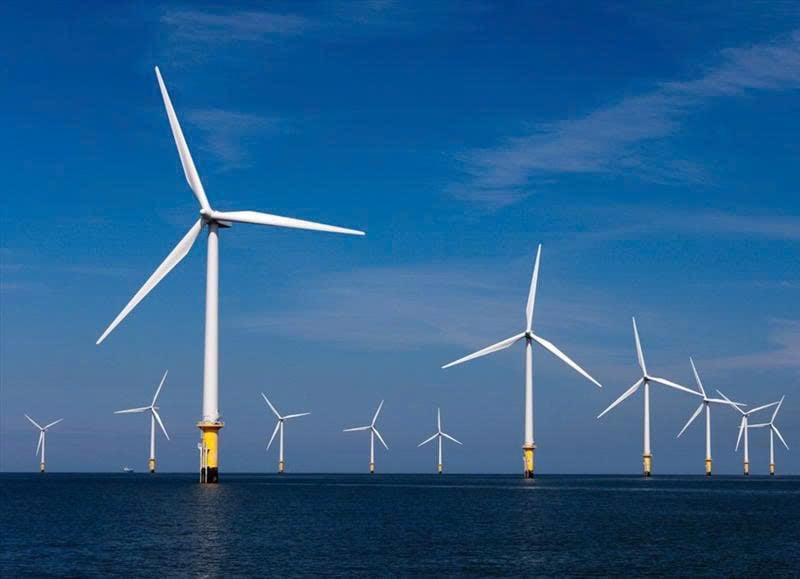
An offshore wind power project in Vietnam. Photo courtesy of VnEconomy.
The report, titled “Detailed Assessment of Wind Resource Potential in Coastal (up to 6 Nautical Miles) and Offshore Areas in Vietnam,” was conducted by the NCHMF with support from the United Nations Development Program (UNDP) and the Norwegian Embassy.
This wind potential was measured at a height of 100 meters above sea level, said Mai Van Khiem, director of the NCHMF. He noted that from November to February each year, wind capacity accounts for half of the annual total – peaking in December and gradually decreasing, with the lowest levels recorded in May.
The southern offshore areas account for 894 GW of this potential, while the northern areas contribute 174 GW.
In nearshore zones (up to 6 nautical miles), the total technical wind power potential is 57.8 GW. The Bac Lieu-Ca Mau region alone contributes nearly 30% of this, while the Ninh Thuan-Binh Thuan area accounts for 24 GW. Although the Quang Tri-Hue region has lower potential, it offers stable wind speeds during the winter months. The Red River Delta has a modest potential of 0.17 GW.
Compared to previous assessments, such as the World Bank’s 2021 study and data from the Global Wind Atlas (GWA), this report provides more detailed and higher-resolution information, both spatially and temporally.
“Notably, the EEZ potential outlined in this report exceeds the World Bank’s estimate by 469 GW, primarily due to the broader scope of the survey and more refined climate modeling using domestic observational data,” the research team explained.
They also emphasized the use of the Weather Research and Forecasting (WRF) model customized specifically for Vietnam, which enhanced the accuracy of the results.
The findings are based on wind data collected from 26 coastal and island meteorological stations, satellite sources from CCMP, ASCAT, and SCATSAT-1 (covering 30 years of ocean surface wind data), as well as buoy data from Nghe An province and seabed depth measurements.
A key innovation in this report is the integration of potential impacts from extreme weather events. Typhoons and tropical depressions occurring between August and October pose structural and safety risks to wind turbines. Meanwhile, strong winds and high waves during the northeast monsoon season can hinder access to and maintenance of offshore wind systems.
To support model calibration and long-term observation, the research team recommends increased investment in offshore wind monitoring stations at heights exceeding 100 meters. They also suggest incorporating these findings into offshore wind development strategies and national marine spatial planning.
Additionally, the team advocates for expanding research into other forms of marine renewable energy, such as wave, tidal, and ocean thermal energy.
“Vietnam has some of the most promising offshore wind resources in the region, creating a strong foundation for the development of a large-scale offshore wind industry. This will contribute to energy security, green economic growth, and the achievement of net zero commitments,” they said.
The study provides a vital scientific basis for policy planning, identifying priority development zones, attracting investment, building infrastructure, and training the future offshore wind workforce, the team added.
Hoang Duc Cuong, deputy director of the Department of Meteorology and Hydrology, emphasized that Vietnam lies within a strong and stable Asian monsoon belt, giving it abundant wind energy potential. He noted that this renewable source will play a key role in meeting the country’s climate change goals and advancing a low-carbon economy.
However, he also warned that marine-based natural disasters are highly complex and could significantly impact the stability of offshore wind operations and energy generation.
The ever-changing status of the global economy following last week’s tariff shocks continue to loom large among investors in Vietnam’s real estate market.
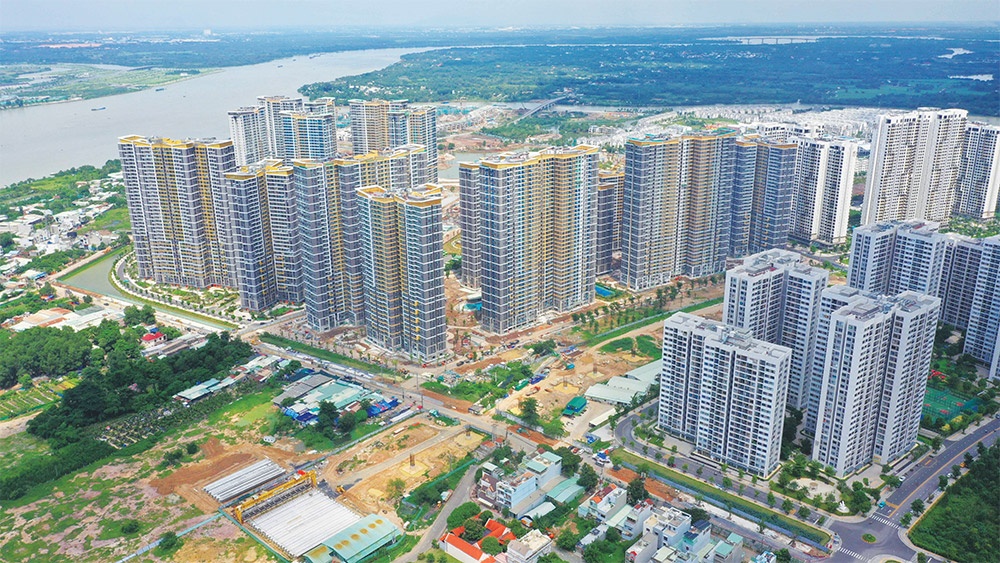 |
| All real estate segments are at risk of losing appeal if high global tariffs are eventually put in place, photo Le Toan |
Pham Lam, vice chairman of the Vietnam Real Estate Association, said that while it is premature to determine the full impact of new US import tariffs on Vietnam’s property market, early signs point to shaken investor sentiment and potential disruptions to foreign investment.
“If multinational corporations scale back or delay their factory expansion plans, the demand for land and factory leasing could decline, which may place downward pressure on industrial rents, lead to increased vacancy, and postpone new industrial zone developments,” he said. “This would affect key industrial property markets such as Bac Ninh, Bac Giang, Haiphong, Long An, and Binh Duong.”
Meanwhile, real estate expert Nguyen Hoang said that the United States remains one of the most critical export destinations for Vietnam’s foreign-invested enterprises.
“Any change in tariffs will significantly influence capital flows, investor confidence, and manufacturing strategies of companies operating in Vietnam. If a high tariff is fully implemented in 90 days, it could seriously diminish Vietnam’s investment appeal – affecting all real estate segments as a result,” Hoang said.
Vietnam’s property market has only recently emerged from a prolonged two-year downturn.
“It remains highly sensitive to economic and policy shocks. Investors have remained cautious, and any further external pressure could threaten to break the fragile liquidity recovery, potentially sending the market back into a period of short-term stagnation,” Hoang added.
Alex Crane, managing director of Knight Frank Vietnam, said that the recent tariff twists by the US casts a shadow of uncertainty, with potential implications for various segments of the market.
While manufacturing has shown resilience, it is still on the path to full recovery from the pandemic, particularly in labour-intensive sectors like garments and furniture. Tariffs imposed now would not have as severe an impact as they might have during Vietnam’s 2019 peak, but consequences are still expected, Crane said.
“I may expect that major transactions, especially those involving large capital outlays, are being paused or undergoing extended due diligence as investors and developers reassess assumptions and underwriting models and commercial occupiers are expected to defer large capital expenditures in the short term,” Crane said.
In addition, the response from the State Bank of Vietnam, particularly regarding monetary policy, will be crucial. While a rate cut may not effectively stimulate residential demand (as demonstrated in 2024), targeted lending for key industries and easing of loan-to-value ratios or debt-to-income limits for developers could provide relief.
“At present, most segments of the real estate market are in a holding pattern, awaiting clarity from the evolving negotiations between the Vietnamese and US governments. While uncertainty is unsettling, Vietnam’s underlying fundamentals remain sound, and the market’s long-term outlook is still viewed positively,” he added.
Nguyen Dung Minh, deputy CEO of MIK Group, has warned that under the new US tariff regime, many investors will be forced to reassess their strategies, likely leading to a decline in the demand for industrial land.
“Investors will need time to re-evaluate their actual demand and incoming orders and make necessary adjustments before they can fully gauge the extent of the impact,” Minh said.
He added that the implications go beyond just industrial land. “The new US tariffs are also expected to disrupt supply chains and negatively affect supporting sectors such as logistics, warehousing, and raw materials manufacturing. As production slows, so too will the demand for land associated with these services,” Minh said.
| Trang Bui, country head Cushman & Wakefield Vietnam
While the effects of tariffs are typically delayed, most economists warn that they may eventually fuel inflation and dampen economic growth. Many manufacturing firms could opt to postpone their expansion plans in the short term if export duties become too burdensome. There is also a possibility that some companies may look to diversify their supply chains towards a Vietnam+1 model, shifting parts of their operations to neighbouring countries. This could lead to a decline in demand for factories and warehouse leasing, two key drivers of the industrial real estate segment. However, it is important to recognise that industrial real estate is fundamentally a long-term investment. Vietnam has long positioned itself as the manufacturing hub of Southeast Asia, thanks to its strategic location and the “bamboo diplomacy” approach, which has enabled the country to swiftly join trade negotiations and sign multiple free trade agreements. Moreover, many manufacturers in Vietnam have already established tightly integrated supply chains. As such, their investment plans tend to operate on a much longer time horizon than the near-term effects of tariff policy. Relocating supply chains typically requires at least 3–5 years, making short-term shifts less likely. Overall, Vietnam’s industrial real estate sector has proven resilient under various political and economic conditions. Investors would do well to focus on long-term trends and structural advantages. Manufacturers, in particular, may take this opportunity to secure high-quality industrial assets, invest in automation, and pull in skilled labour, while continuing to monitor developments in upcoming trade negotiations with caution. Nguyen Thi Bich Ngoc, CEO, Sen Vang Group When it comes to the reciprocal tariff policy announced by the US, the greater danger currently lies not in the tariff itself, but in the heightened sense of uncertainty it has triggered across the Vietnamese market, a sentiment clearly reflected in recent VN-Index fluctuations. In the short term, the policy will weigh heavily on Vietnam’s industrial real estate sector. However, in the long run, this challenge could serve as a catalyst for stronger growth. It presents an opportunity for the government and industrial zone developers to rethink their strategies, offering more competitive, attractive solutions to both foreign and domestic investors. Rather than relying solely on external trends like the China+1 shift, Vietnam should leverage its inherent competitive advantages, including a strategic geographic location, a skilled and cost-effective labour force, and political stability, to pull in long-term investment. These are undeniable strengths that set Vietnam apart. Moreover, this is also an opportune moment for Vietnam to re-evaluate and restructure its key sectors, prioritising strategic industries with high growth potential. Continued engagement in bilateral and multilateral trade agreements will open up new opportunities and elevate Vietnam’s position both regionally and globally. Ultimately, we must seize this challenge as a turning point, transforming pressure into momentum for sustainable development. Vo Hong Thang, Investment director DKRA Group The industrial infrastructure, commercial, and residential real estate segments are all likely to face increasing headwinds if a huge tariff increase is eventually implemented. In recent years, a number of developers have made significant investments in industrial zones, betting on a continued influx of foreign direct investment. However, the new tariff policy raises the possibility of such flows being diverted to other countries. Vietnam now faces the risk of having built the nest, but being unable to attract the eagle. In addition, liquidity in both residential and commercial real estate, including retail, office, and hospitality, is likely to weaken in the short term due to more cautious investor sentiment, defensive capital flows, and reduced purchasing power from end-users. Niche investment segments such as serviced apartments, tourism-related accommodations, and foreign buyer housing could also see demand drop, particularly as the foreign expert and executive workforce, typically a key demand driver, scales back plans to live and work in Vietnam. |
Project
Central Vietnam city seeks $1.84 bln for 15 projects in economic zone
Published
8 months agoon
April 26, 2025Authorities of Hue city in central Vietnam have released a list of 15 projects in Chan May-Lang Co Economic Zone which will need VND47.5 trillion ($1.84 billion) in investment capital between 2025 and 2026.
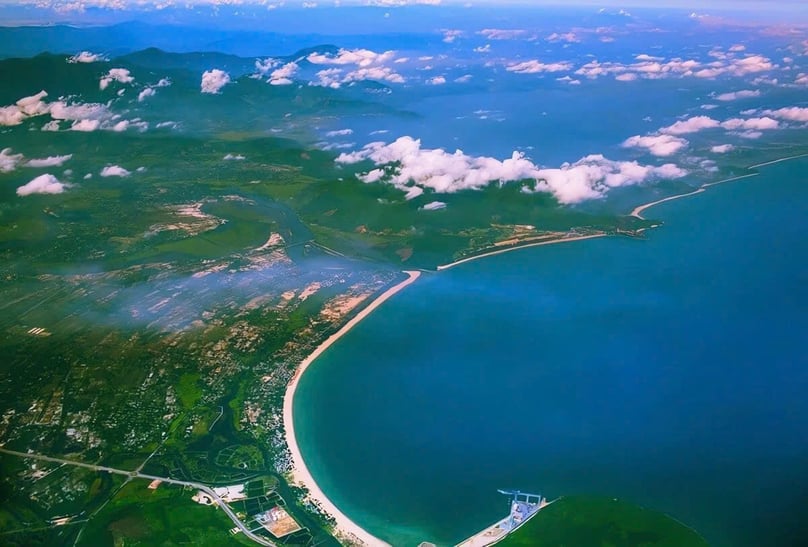
Chan May-Lang Co Economic Zone in Hue city, central Vietnam. Photo by The Investor/Dinh Duy.
Notable projects include the Chan May non-tariff zones No. 1 and 2 infrastructure development project, with a total area of over 503 hectares and combined investment capital of VND2.8 trillion ($108.23 million).
Another is the VND20 trillion ($773 million) Chan May Urban Area project (locations 1 and 2), which will cover 225 hectares and be implemented over five years.
The LNG terminal project at Chan May Port, 27 hectares with an investment of VND8.6 trillion ($332.43 million), is set for five-year implementation.
The 120-hectare Bai Ca eco-tourism project in Lang Co township will have investment capital of VND2.5 trillion.
The Lang Co beach resort, with an area of 45 hectares and total investment of VND4 trillion ($154.62 million), will be carried out over five years; while the 75-hectare Lap An lagoon tourism, urban development and resort complex in Lang Co township will cost VND6 trillion.
According to the management board of Hue Economic and Industrial Zones, since its establishment, Chan May-Lang Co Economic Zone has attracted 55 investment projects which remain valid, with total registered capital of VND97.32 trillion ($3.76 billion).
Among these, 15 are foreign-invested projects with combined capital of VND56.02 trillion ($2.17 billion), accounting for 57.56% of the total.
Several prominent foreign investors have established a presence in the zone, such as Banyan Tree Group (Singapore) with the Laguna Lang Co Resort and Winson Group (Taiwan) with the Billion Max Vietnam Export Processing Factory.
Chan May-Lang Co has become a destination for investments in sectors like tourism and resort development; seaport infrastructure; logistics; clean industry; and high-tech, environmentally friendly industries, with annual revenue reaching nearly VND4 trillion ($154.62 million) and tax contributions of around VND300 billion.
The management board said Hue city has proposed the Ministry of Construction review the adjustment of the EZ master plan through 2045, for submission to the Prime Minister.
The strategic goal is to develop Chan May-Lang Co into a key economic zone of central Vietnam – a coastal gateway offering logistics services for the central region and the East-West Economic Corridor, as well as a hub for high-end tourism services.
To attract investors, the local government will offer a range of incentives such as a 10% corporate income tax rate for 15 years from the first year the project generates revenue; import tax exemption for goods to create fixed assets for investment projects, and land and water surface rental exemptions, the board said.

Bac Giang International Logistics Centre launched

Vietnam’s Exclusive Economic Zone boasts over 1,000 GW of wind power potential: report

Uncertainty weighing on real estate

Central Vietnam city seeks $1.84 bln for 15 projects in economic zone

